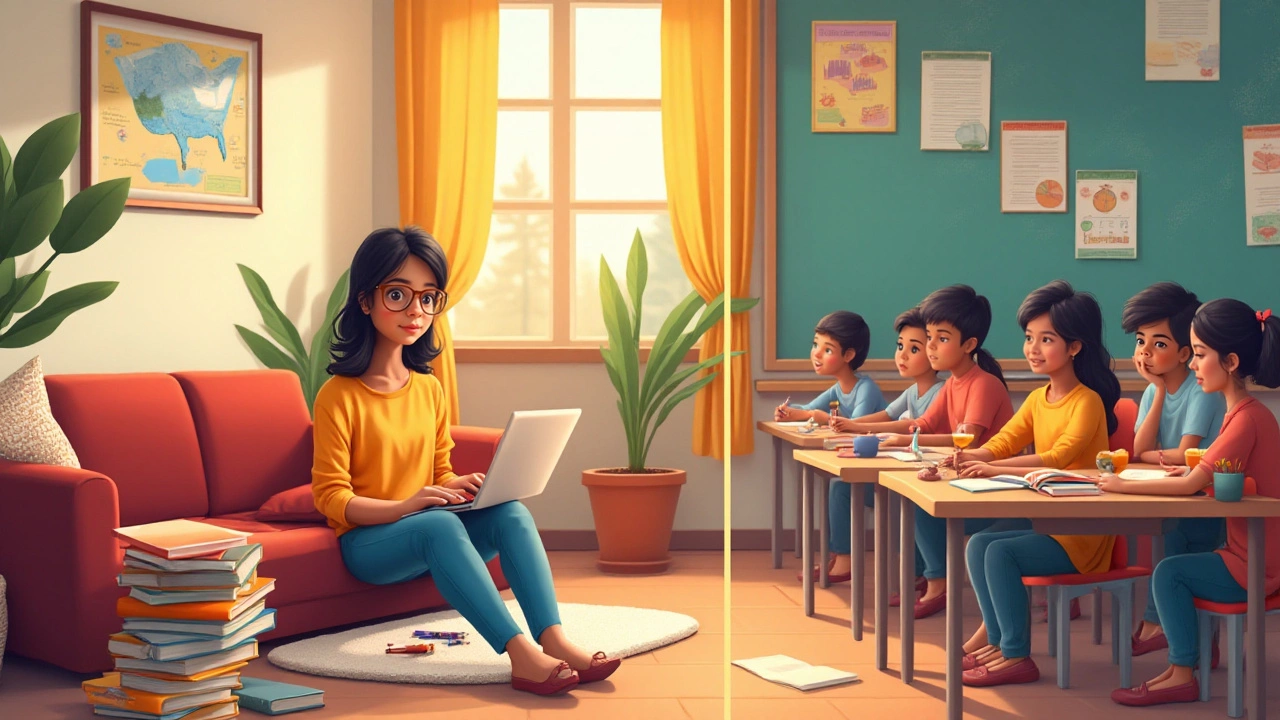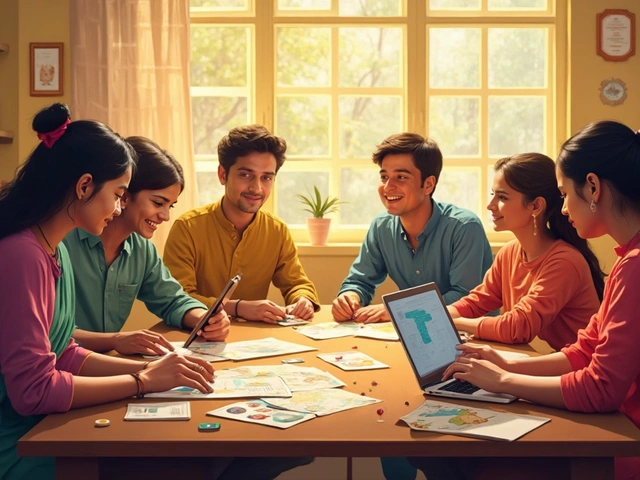The education paradigm continues to shift with the increasing prevalence of distance learning. Yet, many still ask: can it genuinely compare to the tried-and-true classroom experience? As we delve into this discussion, it's crucial to consider not only the benefits and limitations inherent in each mode but also the individual needs of learners seeking to navigate their educational journeys.
With the rise of online platforms, students today have unprecedented access to diverse courses, expert instructors, and flexible scheduling. However, one might wonder if the digital frontier can adequately replace the interpersonal dynamics and hands-on engagement fundamental to traditional classrooms. Here, we will explore these questions, offering insights to help chart a course that harnesses the advantages of both settings.
- The Rise of Distance Learning
- Benefits of Traditional Classroom Learning
- Challenges in Distance Education
- Finding the Right Balance
The Rise of Distance Learning
In recent years, the digital revolution has catalyzed a significant transformation in educational landscapes, making distance learning not only a viable option but often the preferred choice for millions around the globe. Emerging from the shadow of traditional education methods, it now stands at the forefront, reshaping how knowledge is imparted and received.
Historically, distance education's roots can be traced back to correspondence courses in the 19th century, where students would receive lessons by post. Fast forward to today, and we witness a staggering evolution. The advent of high-speed internet has unlocked unprecedented possibilities, allowing learning to occur synchronously and asynchronously, transcending geographical and temporal barriers.
The Technological Catalyst
Technological advancements are undoubtedly the backbone of this movement. Platforms such as Coursera, edX, and Udemy, alongside established entities like Harvard and MIT, offer courses ranging from simple coding classes to advanced aerodynamics. These platforms leverage video conferencing, interactive software, and online forums to mimic and, in some areas, enhance the classroom education experience. With machine learning and AI providing personalization, each student's path can be tailored to maximize learning outcomes.
Flexibility: The Core Advantage
One cannot discuss the rise of online education without highlighting its flexibility. For individuals balancing work, family, or different time zones, the ability to access content at their pace and according to their schedule is transformative. The result? A democratization of education, opening doors to those previously hindered by logistical constraints.
| Year | Students Enrolled in Online Courses Globally (millions) |
|---|---|
| 2019 | 66 |
| 2021 | 92 |
| 2023 | 113 |
The statistics speak volumes. Between 2019 and 2023, the number of students participating in online courses soared from 66 million to a staggering 113 million, a testament to the growing recognition of distance learning as a credible and effective means of education.
Challenges to Overcome
Despite its growth, not all aspects are ideal. Concerns surrounding internet accessibility, technology literacy, and the need for self-discipline are issues yet to be fully resolved. However, as technology continues to advance, these challenges are gradually being addressed through innovative solutions and increasing resource investment.
In summary, the uptick in distance learning signals a fundamental shift not merely in educational delivery but also in its perception. As society embraces this change, what remains to be seen is how it integrates with traditional methods to create a hybrid model that could potentially combine the best of both worlds.
Benefits of Traditional Classroom Learning
In an era where digital solutions frequently overshadow traditional methods, the allure of the classroom education should not be overlooked. The time-tested classroom setting remains a pivotal component of effective learning, cherished for its unique ability to foster direct human interaction and engagement.
Interaction and Socialization
One of the most significant advantages of classroom education is the opportunity for face-to-face interaction. Teachers can offer immediate feedback, adjust instruction to address any confusion in real-time, and create an environment conducive to spontaneous discussions. This interaction not only aids comprehension but also enhances the social skills of students, preparing them for team-based work environments.
In the classroom, students are exposed to diverse perspectives, leading to a more rounded understanding of subjects. They learn to communicate, negotiate, and collaborate—skills essential in today's global workforce.
Structured Learning Environment
The traditional classroom offers a structured learning environment where distractions are minimized. A designated space dedicated to learning—and learning alone—can help students focus more attentively on their studies compared to a potentially distracting home environment.
Teachers can tailor their teaching styles to the needs of the class, utilizing a variety of methods including visual aids, hands-on activities, and group work, fostering a more dynamic and engaging learning experience.
Access to Resources
Schools and universities equipped with laboratories, libraries, and real-time access to educational materials provide students with resources that might not be available at home. This access enhances learning experiences, particularly in subjects that require practical experimentation and research.
Development of Routine and Discipline
Attending regular classes instills a sense of routine and discipline in students. The predictability of a daily schedule can benefit learners who thrive in a consistent and stable environment. This routine supports time management skills, punctuality, and accountability.
| Aspect | Classroom Setting |
|---|---|
| Interaction | Face-to-face communication |
| Resources | Access to physical materials and labs |
| Structure | Structured schedule |
Emphasizing on discipline, this routine encourages students to allocate dedicated time for study, rest, and recreation, promoting a balanced lifestyle.
In summary, while digital education is a powerful tool in its own right, traditional classroom education continues to play an indispensable role. By combining the strengths of both learning environments, we can provide a comprehensive educational experience that meets the varying needs of learners.

Challenges in Distance Education
While distance learning offers many advantages, it is not without its hurdles. One of the most significant challenges lies in maintaining student engagement. Without the physical presence of a classroom environment, students often find themselves battling distractions and a sense of isolation. Engaging students through a screen requires innovative teaching methods and resources, which not all educators may be well-equipped to provide.
Technical Difficulties
Technology is at the heart of online education, but sometimes it can also be its Achilles' heel. From unreliable internet connections to incompatibility issues across devices, technical difficulties can disrupt learning experiences. Moreover, there's often a learning curve associated with new platforms and tools that can be daunting for both students and educators.
Lack of Personal Interaction
The absence of face-to-face interaction can lead to a lack of motivation and accountability. Students may miss spontaneous discussions and on-the-spot feedback that a classroom education naturally facilitates. This lack of immediacy in communication can also affect the instructor's ability to gauge a student's comprehension and emotional well-being.
Ensuring Quality and Accreditation
Another concern is the skepticism surrounding the quality and recognition of online education. Not all online programs offer the same level of rigor, and students must be discerning when choosing institutions that provide accredited and well-regarded courses. The absence of a unified standard across different platforms can leave students questioning the long-term value of their online credentials.
Access and Equity
Finally, access to the necessary technology and resources can be a barrier. Students in remote or underserved areas may not have the same opportunities to engage in distance learning. Despite efforts to bridge this gap, disparities in access to quality education persist, raising concerns about equality and inclusive education.
A study by the Open University suggests that nearly 25% of distance learning students reported issues with internet access affecting their studies. These challenges highlight the ongoing need to address technological and systemic barriers to create a more equitable learning environment online.
Finding the Right Balance
In the quest to determine the ideal learning method, many educators and students find themselves at a crossroads between distance learning and classroom education. Striking the right balance involves evaluating the strengths and weaknesses of each approach while considering the unique needs of individual learners.
Understanding Learning Preferences
Learning is an individual experience, shaped by personal preferences and circumstances. Some thrive in the solitude of online education, relishing the flexibility and the opportunity to learn at their own pace. For others, the structured environment of in-person classroom education—with face-to-face interactions with peers and instructors—provides a more conducive learning atmosphere.
Consider Anna, a university student balancing a part-time job. She values the option to attend lectures online, saving time on commuting and adjusting her schedule around her work commitments. Alternatively, Ben, who finds motivation in interactive discussions and group projects, prefers the vibrancy of his physical classroom.
Combining Strengths for Enhanced Learning
The key to effective education may not lie in choosing one method over the other, but rather in integrating their strengths. Hybrid models, which blend online resources with traditional classroom interactions, are gaining traction for their ability to offer a more comprehensive educational experience.
Hybrid Learning Models
Hybrid or blended learning models combine digital learning tools with in-person instruction. For instance, online platforms could be used to deliver lectures and materials, with classroom sessions reserved for hands-on projects and discussions. This approach allows students to benefit from the best of both worlds.
The Role of Technology and Innovation
Technology plays a pivotal role in bridging the gap between different learning modalities. Innovative tools like virtual reality and AI-driven analytics offer personalized feedback and immersive experiences that can enhance both distance learning and classroom interactions.
Adapting to Individual Needs
For institutions and educators, understanding and adapting to the varied needs of students is crucial. Ensuring that courses are flexible, inclusive, and engaging can help maintain student motivation and success.
| Mode | Flexibility | Engagement Level | Accessibility |
|---|---|---|---|
| Distance Learning | High | Variable | Global |
| Classroom Education | Low | High | Local |
| Hybrid Learning | Moderate | High | Global/Local |
Ultimately, the future of education may see a seamless blend of both distance learning and traditional methods, tailored to leverage the strengths of each. By embracing this balanced approach, we can ensure that education continues to evolve, meeting the diverse needs of learners in a rapidly changing world.





